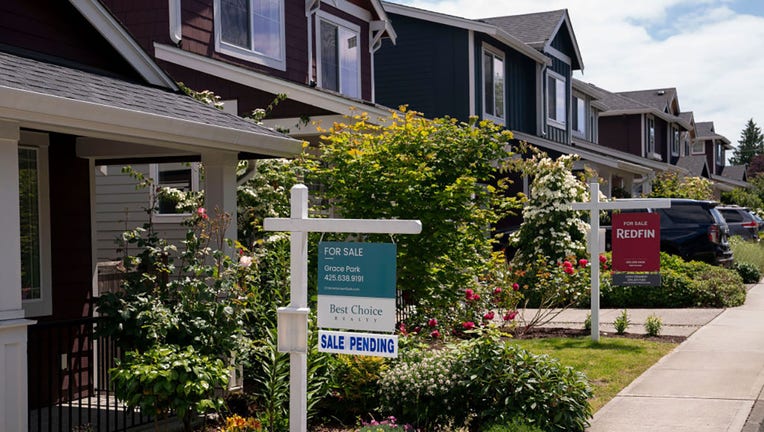Home prices hit another record in June even as sales fall: What to know

FILE - Homes for sale in the West Seattle neighborhood of Seattle, Washington, on June 18, 2024. Photographer: David Ryder/Bloomberg via Getty Images
The cost of buying a house hit another all-time high in June, even as sales of existing homes slump, according to a new report.
The median existing U.S. home sale price jumped to $426,900 in June – a 4.1% increase from the same time last year, according to data shared by the National Association of Realtors, the largest U.S. trade association for people involved in real estate.
The figure marks the highest level on record and is the second straight month that prices topped a new high, the NAR said. Similar findings were shared by real estate company Redfin earlier this month.
Meanwhile, sales of previously-owned homes tumbled 5.4% to an annual rate of 3.89 million units. All four major U.S. regions posted sales declines in June, the trade association said.
Year-over-year, home sales waned in the Northeast, Midwest and South but were unchanged in the West.
"We're seeing a slow shift from a seller's market to a buyer's market," NAR Chief Economist Lawrence Yun said in a statement. "Homes are sitting on the market a bit longer, and sellers are receiving fewer offers. More buyers are insisting on home inspections and appraisals, and inventory is definitively rising on a national basis."
RELATED: 10 cities where you'll regret buying property in next 5 years, according to real estate agents
In a potentially good sign for buyers, however, there was an uptick in inventory in June. At the end of the month, there were about 1.32 million homes for sale, according to the report – up 3.1% from May and 23.4% from the same time one year ago.
On average, homes sold in about 22 days last month. That figure is down from the 24 days recorded in May but marks an increase from the 18 days in June 2023. Before the pandemic, homes typically sat on the market for about a month before being sold.
At the current pace of sales, it would take roughly 4.1 months to exhaust the inventory of existing homes – the highest level since May 2020. Experts view a pace of six to seven months as a healthy level.
"Even as the median home price reached a new record high, further large accelerations are unlikely," Yun said. "Supply and demand dynamics are nearing a balanced market condition."
What’s driving the housing affordability crisis?
Years of underbuilding fueled a shortage of homes in the country, a problem that was later exacerbated by the rapid rise in mortgage rates and expensive construction materials.
Higher mortgage rates over the past three years have also created a "golden handcuff" effect in the housing market. Sellers who locked in a record-low mortgage rate of 3% or less during the pandemic began have been reluctant to sell, limiting supply further and leaving few options for eager would-be buyers.
"The decrease in sales is a stark reminder that affordability is still a challenge," Zillow Senior Economist Orphe Divounguy said in a statement in response to existing home sales falling.
"Looking ahead, inflation easing faster than previously anticipated should help to bring mortgage rates down slightly from the Spring highs, potentially supporting a late season rebound in home buying activity," Divounguy added.
Mortgage rates predictions for the rest of 2024
Economists predict that mortgage rates will remain elevated for most of 2024 and that they will only begin to fall once the Federal Reserve starts cutting rates.
Even then, rates are unlikely to return to the lows seen during the pandemic, with investors predicting just one or two rate reductions this year.
"Some prospective buyers are simply waiting for mortgage rates to come down after the Federal Reserve cuts rates, most likely in September," said Lisa Sturtevant, Bright MLS chief economist. "With inflation cooling and the job market still solid, rate cuts are now almost a foregone conclusion, which means those buyers who can wait are doing so."
Most homeowners say they are nearly twice as willing to sell their home if their mortgage rate is 5% or higher, according to a Zillow survey. Currently, about 80% of mortgage holders have a rate below 5%.
This story was reported from Cincinnati. FOX Business contributed.

